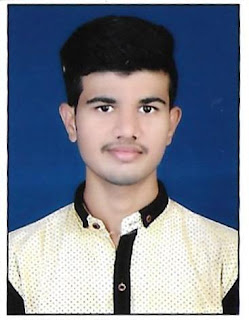 |
| Our Weird Home |
Our Weird Home
Hello and welcome to NASA Science Live.
I'm your host, Yogesh Bhamare.
We observed thousands and thousands of changes at the molecular and genetic level when Scott Kelly was in space.
We observed changes in small molecules in the bloodstream, changes in how genes go up and go down, uh, changes in how DNA was packaged.
The telomeres got longer. The microbiome in the gut changed. We saw stressors in the body, changes in his vision.
And also, we've been looking intensely at immune cells, which are notoriously adaptive. And so we know that These cells are expected to change.
This is the first time ever that we've studied. A twin in space flight and one on the ground.
So we have the same genetic background in both individuals and are now looking at how the environment, uh, changes things-- in this case, space flight.
The gene expression In Scott's white blood cells changed in flight. 7% of the gene expression persisted six months after his flight.
So genes are not on or off. They're throttled, like your automobile engine.
7% of 'em were throttled in a different position even six months after the flight.
You know, 7% of genes sounds like a lot, but it's important to remember that it's the genes Just changing their expression, going up and down.
To know more about SpaceX: Journey to the Future: Click here
So Scott and mark kelly are still identical twins. Uh, they may have had changes in their chromosomes how DNA is packaged but at the end of the day, they're still gonna look like each other.
They're definitely still twins. The really big question is, what about three years?
Does should we expect to see, you know, basically three times the number of changes, ten times the number of changes?
Really, we-we doesn't know at this point, 'cause this is the first study of its kind. This sets the bedrock of knowledge for all the future astronaut studies.
The vision of the future would be you look at the entire genetic code, all the molecular structures and changes in an individual, and then customize What he or she will need for long-term missions.
So this could be physical changes to how they do exercise, and also even just how they, uh, take vitamins, and how they even manage their microbiome.
Really, every molecule is fair game for making sure it's customize For each astronaut.
This research helps us in exploration by understanding how the human body and mind responds to space flight.
To know more about SpaceX Starlink Internet Constellation: Click Here
The space station is our stepping stone To further journeys To the moon and to mars.
We are often asked how NASA benefits you Nasa is everywhere Firefighters breathe using pressurized air tanks they were originally designed for life support systems on spacecraft.
The same lightweight tanks fuel city buses First responders get precise GPS locations thanks to NASA algorithms. The same code makes your navigation app work better.
Nasa tech even enhances your workout With 'weightless' exercise devices that build muscle in space and on earth there's more space in your life than you think
Nasa helps everyone live in a better world
Spinoff.
For the longest time, space seemed like a big, nearly empty place. And we were really only familiar with our home, earth.
But as we learned more, we realized there was actually a lot out there, including planets orbiting the sun, and even other stars.
Enter Kepler, a space telescope that radically changed our understanding of planets outside of our solar system, also known as exoplanets.
In finding thousands of new planets, Kepler showed that there are more planets in our galaxy than there are stars.
But Kepler looked at only a small fraction of the sky, and many of the planets it discovered are too far away to study in many further details and that brings us to tess, our newest planet hunter.
The transiting exoplanet survey satellite works like Kepler, and over the next two years, it will scan almost the entire sky.
By looking at closer and brighter stars, tess will find and measure the sizes of dozens of small nearby planets, best suited for detailed investigation by powerful telescopes on the ground and in space, like the future James webb space telescope.
And by doing that, we might finally begin to answer the question of whether the earth is alone, or whether there are worlds out there like our own-- small and rocky, covered in oceans and dense clouds, or even possibly.
We will go forward to the moon with humans explore moon to mars we are expanding our presence in the solar system with our powerful rocket and versatile spacecraft building and testing new tools and technologies advancing human innovation living and working
Far from home.
To know more about Sanskrit and Artificial Intelligence in Space Science: Click Here
Using lessons learned in earth orbit
Building a gateway to explore the moon and beyond enabling a space economy in earth orbit and on the moon using new human lunar landers and working with our partners.
T-minus 60 seconds and counting, we are going for apollo 7 at this time. And from the crew Apollollo 8, we close with good night, good luck, a merry Christmas, and God bless all of you, all of you on the good earth.
We have ignition sequence start, engines on, five ... Four ... Three ... Two Houston, ah, tranquillity base here, The eagle has landed.
That's one small step for man, one giant leap for mankind. We leave as we came, and god willing as we shall return with peace, and hope for all mankind.
We're on our way Houston. From 1969 to 1972, we had a total of six moon landings, 12 humans walked on the surface of the moon.
We have elevated the human condition. We have improved human lives. We have raised the standard of living for every person on earth because of space exploration.
We're going to go back to the moon,
And we're going to take what we learned there and we're going to go to mars.









No comments:
if you have any doubt, let me know